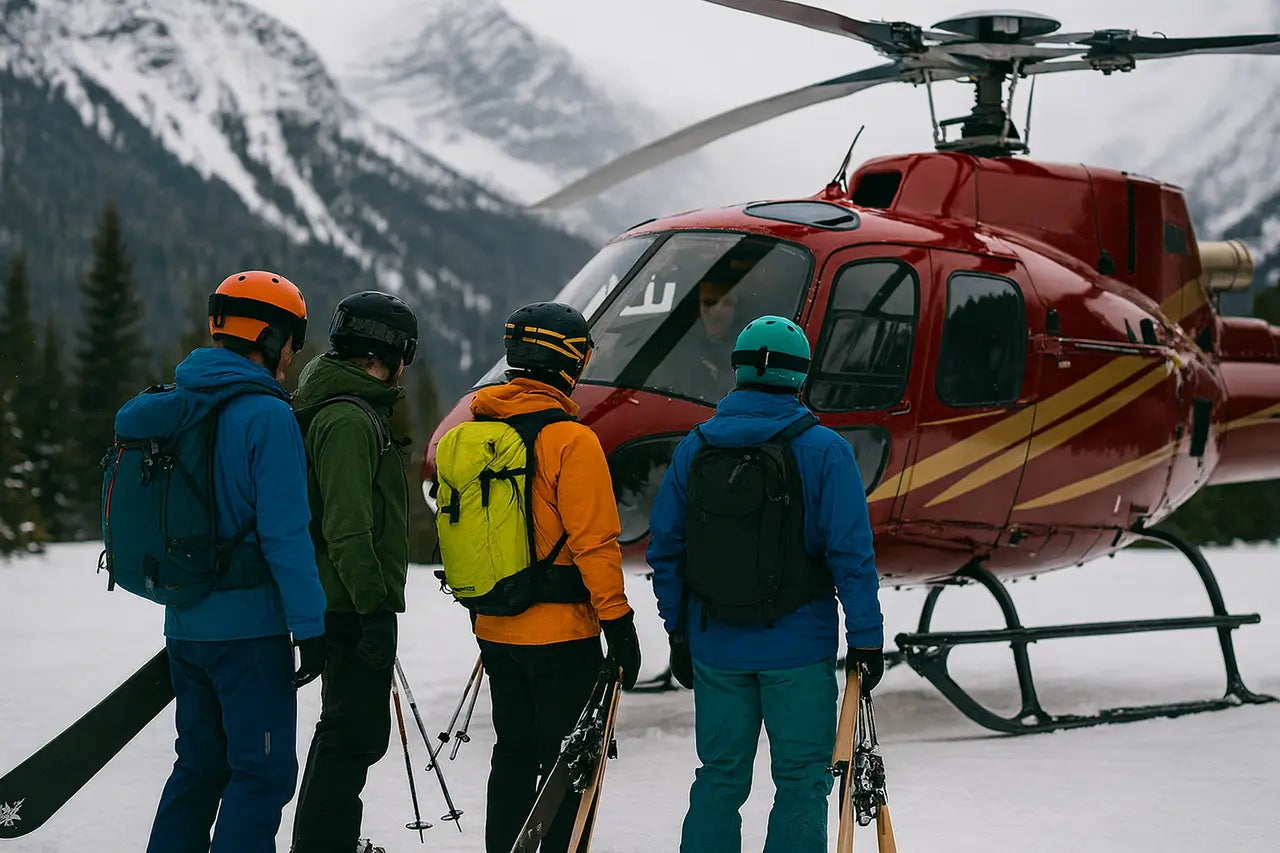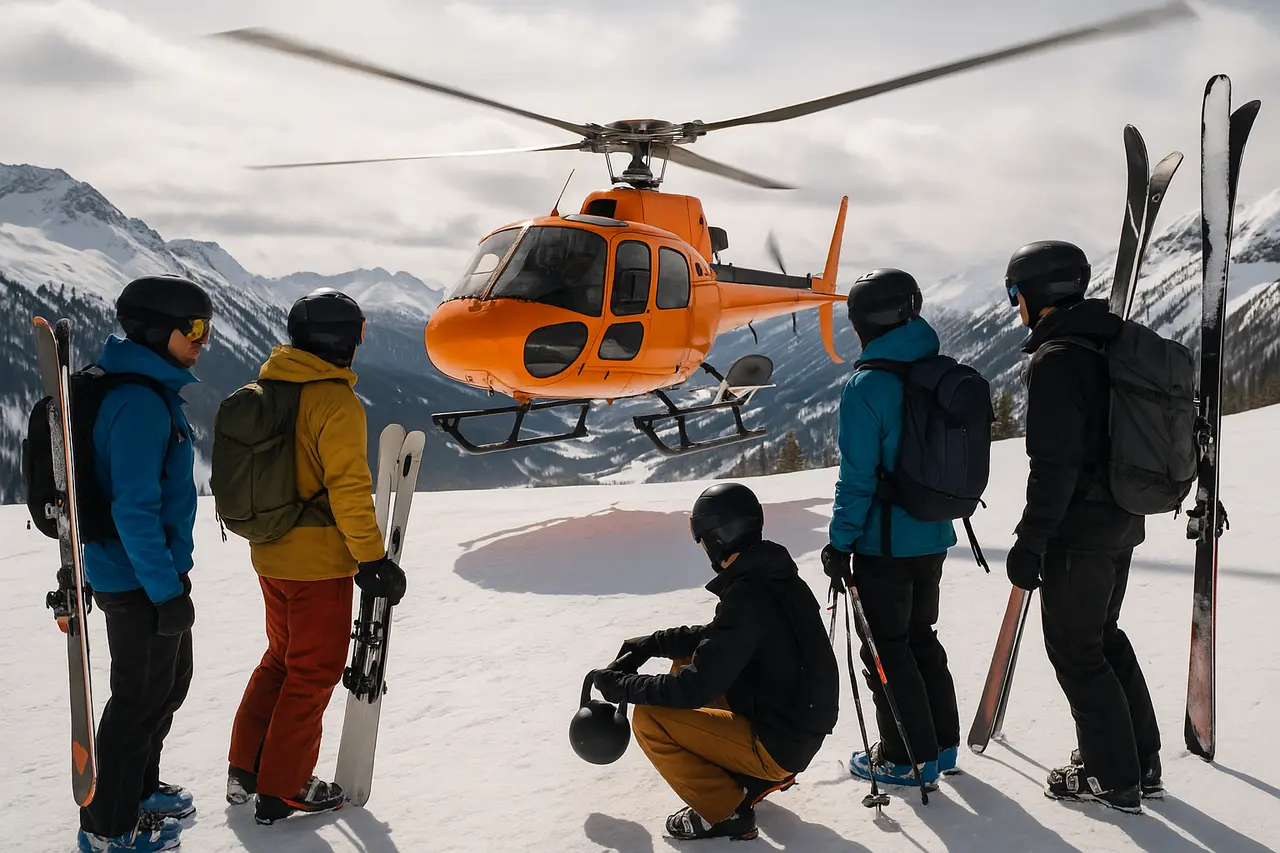Heliskiing is a thrilling adventure sport that combines the excitement of skiing with the breathtaking beauty of untouched, snow-covered slopes. However, embarking on a heliskiing trip requires more than just enthusiasm; it demands the right gear to ensure safety and maximize enjoyment. In this blog, we’ll explore the essential and top-notch gear you’ll need for the upcoming heliskiing season.
Understanding the Basics: What is Heliskiing?
Before diving into gear specifics, it’s crucial to understand what heliskiing involves. Combining helicopter transport and skiing, it allows skiers to access remote and untouched areas that offer challenging terrain and outstanding natural beauty. One of the appealing aspects of heliskiing is the opportunity to ski on pristine snow that hasn’t been groomed by machines. Imagine the exhilaration of leaping out of a helicopter at the top of a towering, snow-covered peak and carving your way down through soft, fresh snow. It’s an experience unlike any other, offering both the thrill of exploration and the serenity of wide-open spaces.
For those unfamiliar with heliskiing, it’s important to distinguish it from regular skiing at a resort. Instead of catching lifts up pre-determined pistes, heliskiing pairs you with a helicopter, which acts as your personal ski lift, ferrying you to peaks untouched by groomers. This means you get the purest of experiences in skiing, influenced solely by the natural elements. It’s not just about adrenaline; it’s about connecting with nature in a very real way, accessing terrain that few get to see.
Essential Gear for Safety and Enjoyment
When it comes to heliskiing, safety is paramount. Essential gear includes avalanche beacons, probes, and shovels, all of which are critical for avalanche safety and rescue operations. Additionally, a high-quality helmet and back protector are necessary to safeguard against potential falls. It’s also vital to carry a first aid kit tailored for alpine conditions, because even minor injuries can become serious on the slopes. A reliable communication device is crucial as well, such as a satellite phone or a two-way radio, which can be a life-saving tool when you need to reach out for emergency services in remote locations.
Every heliskiing enthusiast should also consider the importance of proper training in using safety equipment. Tools like avalanche beacons or probes are only effective if you know how to operate them correctly. Consider taking a short course on avalanche awareness and rescue operations before setting out. This proactive step can not only boost your confidence but also ensure you’re an asset, not a liability, to your ski group. Remember, preparation is not just about having the best gear; it’s also about having the know-how to use it effectively.
While technology has vastly improved safety measures in outdoor sports, it’s important to carry durable gloves and protective eyewear to guard against the elements and unforeseen events. Ski poles are another integral part of your gear set. Choose poles that are lightweight yet robust, providing stability and balance while you navigate the snowy descents. Modern poles come with adjustable lengths to adapt to varied terrains. This can make an immense difference in your energy expenditure over a day, allowing for more runs and less fatigue.
Choosing the Right Skis and Bindings
The skis you choose should be designed for powder skiing, emphasizing width and stability. Bindings should provide a reliable release mechanism and be compatible with your ski boots, ensuring both safety and performance in deep snow. Opt for skis that have a pronounced rocker, providing better floatation over powder. This design helps keep the tips above the snow, which can reduce the fatigue often associated with deep snow skiing. When it comes to bindings, look for those with a high DIN range that meets your skiing style and level, providing the requisite hold without compromising on safety.
Selecting the appropriate bindings is not just about compatibility, but also about reliability. The bindings need to be tested before each trip, ensuring they release when they should to prevent injury. Consider consulting with a professional ski technician to adjust your bindings according to your weight, skill level, and skiing conditions. The right calibration can prevent accidents, allowing you to focus solely on the thrill of the descent.
Apparel: Dressing for the Elements
Layering is key when dressing for heliskiing. Start with moisture-wicking base layers, followed by insulating mid-layers, and a waterproof, breathable outer shell. Don’t forget accessories like gloves, goggles, and a warm hat to protect against the cold and sun. It’s always advisable to choose bright, high-visibility clothing for both aesthetic appeal and safety. In case of emergencies, high-visibility apparel can make it easier for rescue teams to spot you. Consider using a balaclava to protect your face from harsh winds and sunburn, particularly important in the high-altitude environment.
When selecting apparel, it is important to choose items made of technical fabrics designed for extreme conditions. Look for jackets with snow skirts or gaiters to prevent snow from entering, and pants with zippered vents for ventilation during intense activity. All clothing should allow for a full range of motion. As a final touch, UV-resistant goggles with interchangeable lenses can adapt to changing light conditions, ensuring you maintain a clear view and undoubted safety on the slope.
Must-Have Accessories for Heliskiing
Beyond the basics, certain accessories can enhance your heliskiing experience. Consider investing in a good backpack, complete with a hydration system, and a portable GPS or avalanche airbag system for added safety. These tools can make your adventure both more convenient and secure. Hydration systems are especially important, as skiing at high altitudes can quickly dehydrate you. Portable GPS devices can help you trace your route, and avalanche airbags can provide crucial life-saving buoyancy if caught in a slide.
A small tool kit for quick fixes, packed with items like screwdrivers for adjusting bindings and a multi-tool, can prove invaluable. Lightweight is the key when it comes to additional gadgets. Though portable solar chargers are often overlooked, they are incredibly useful for keeping your devices powered in remote areas. When every ounce counts, these efficient chargers can ensure all your electronics, from cameras to communication devices, remain operable.
Lastly, we can’t ignore the power of technology to enhance the heliskiing experience. Action cameras with stabilizing features can capture your runs on film, allowing you to relive the adventure with friends and family. Just ensure they’re mounted securely and robust enough to handle the rigors of skiing. Additionally, many skiers now use tracking apps to analyze their performance, ensuring that each descends is not only enjoyable but also an opportunity to improve their skills.
Gear Up for an Unforgettable Heliskiing Adventure
Equipping yourself with the right gear is essential for a successful and enjoyable heliskiing experience. As you prepare for the upcoming season, focus on quality and functionality to ensure that you’re ready to tackle the pristine backcountry terrain. With the right gear in tow, you’re all set for unforgettable adventures and stunning descents.



Share:
Ski Fitness: How to Prepare for the Upcoming Season
The Countdown to Powder: Why This Could Be the Best Season Yet